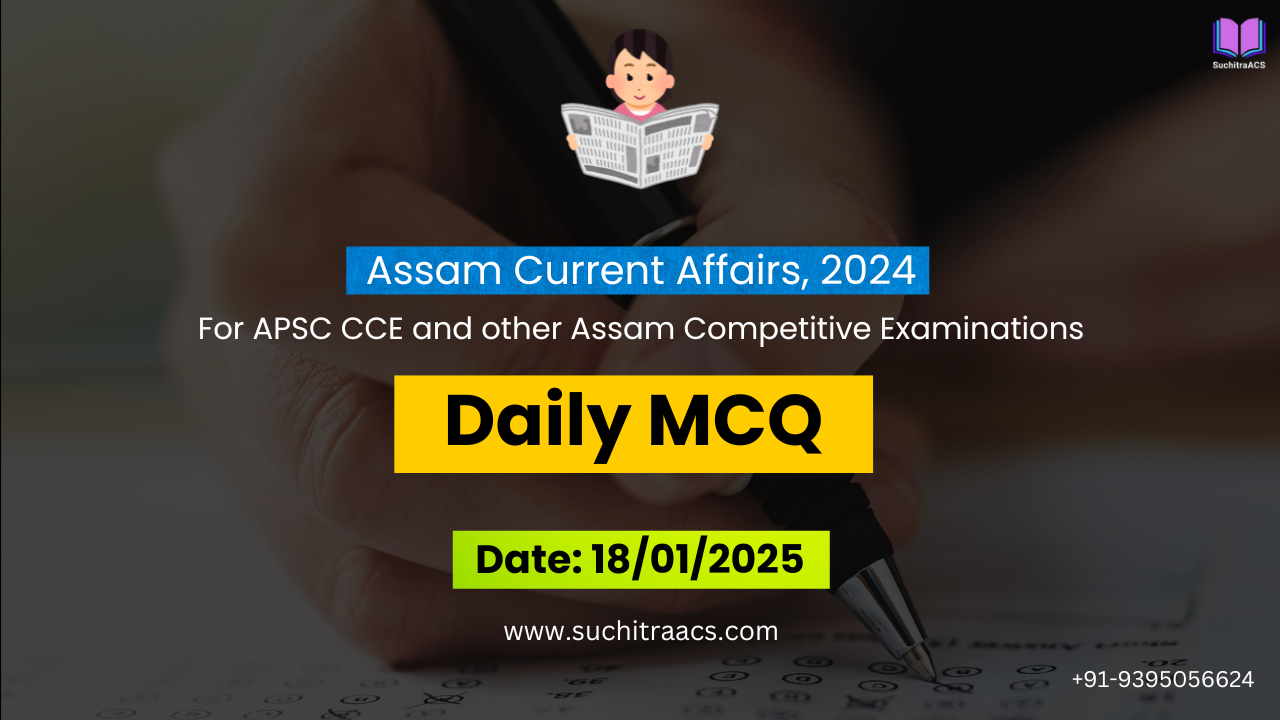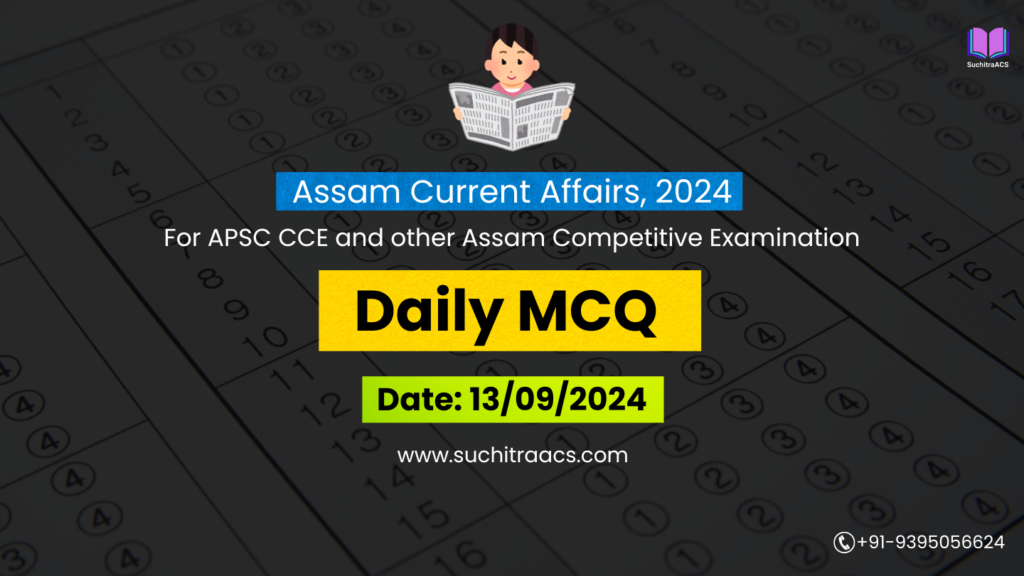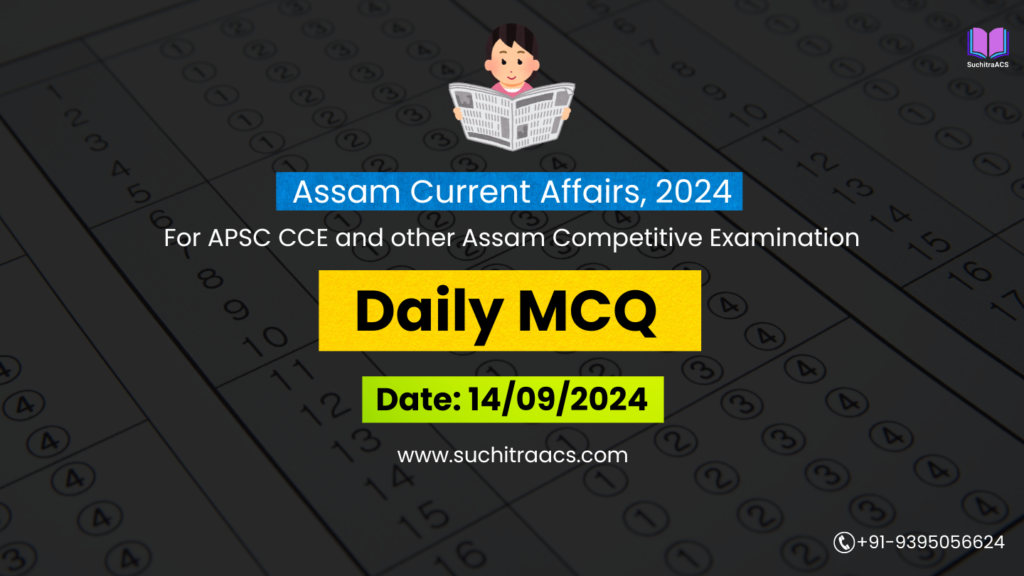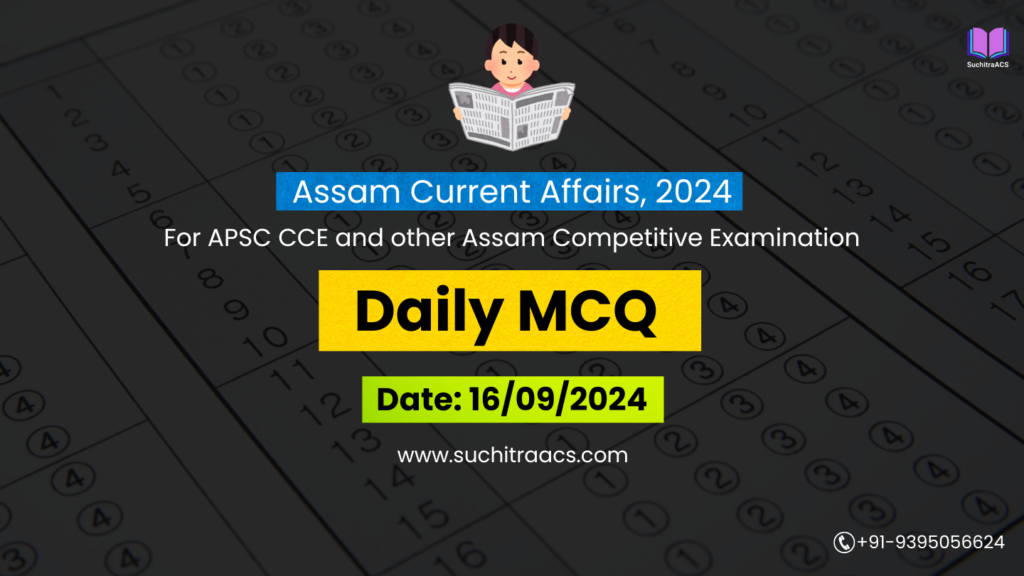APSC MCQs / APSC Prelims Practice Questions based on Assam Tribune (Daily) – 18/01/2025
For APSC CCE and other Assam Competitive examinations aspirants, practicing Daily MCQs is vital. This blog covers most important Prelims questions from the Assam Tribune today (18-01-2025). These issues are key for both APSC Prelims syllabus, offering insights into the important topics of current affairs.
APSC MCQs / APSC Prelims Practice Questions (Date: 18/01/2025)
1. Rat-Hole Mining Menace in Assam
Question 1:
What is the primary characteristic of rat-hole mining?
- (a) Large-scale mechanized mining
- (b) Open-pit mining for coal extraction
- (c) Digging narrow tunnels for manual coal extraction
- (d) Environmentally sustainable mining practices
Answer: (c) Digging narrow tunnels for manual coal extraction
Explanation: Rat-hole mining involves creating narrow tunnels for extracting coal manually. It is hazardous and environmentally damaging, prevalent in parts of Assam and Meghalaya.
Question 2:
Which district in Assam is most associated with illegal rat-hole mining?
- (a) Dibrugarh
- (b) Dima Hasao
- (c) Lakhimpur
- (d) Kamrup
Answer: (b) Dima Hasao
Explanation: Dima Hasao is a known hotspot for illegal rat-hole mining in Assam, as highlighted in recent reports and incidents.
Question 3:
What is a significant environmental impact of rat-hole mining?
- (a) Conservation of groundwater
- (b) Increased agricultural productivity
- (c) Soil degradation and water pollution
- (d) Expansion of forest cover
Answer: (c) Soil degradation and water pollution
Explanation: Rat-hole mining leads to deforestation, soil degradation, and acid mine drainage, causing significant water pollution.
2. Sustainable Development of the Brahmaputra Riverbank
Question 4:
Which of the following species is declared as India’s National Aquatic Animal?
- (a) Gangetic Dolphin
- (b) River Dolphin
- (c) Saltwater Crocodile
- (d) Mahseer
Answer: (b) River Dolphin
Explanation: The River Dolphin, found in rivers like the Brahmaputra and Ganga, is India’s National Aquatic Animal.
Question 5:
The Jeevan Kite River Festival primarily focuses on:
- (a) Promoting adventure sports in Assam
- (b) Highlighting sustainable practices for riverbank development
- (c) Cultural exchanges between Northeast and Southeast Asia
- (d) Celebrating Assam’s rich biodiversity
Answer: (b) Highlighting sustainable practices for riverbank development
Explanation: The Jeevan Kite River Festival serves as a platform for discussing eco-conscious practices and sustainable riverbank development.
Question 6:
Which of the following rivers is categorized under India’s National Waterways?
- Brahmaputra
- Ganga
- Godavari
Select the correct answer using the code below:
- (a) 1 only
- (b) 1 and 2 only
- (c) 2 and 3 only
- (d) 1, 2, and 3
Answer: (d) 1, 2, and 3
Explanation: The Brahmaputra (NW2), Ganga (NW1), and Godavari (NW4) are categorized as National Waterways.
3. Indigenous Agricultural Practices in Assam Amidst Climate Change
Question 7:
What is Bao Dhan in the context of Assam?
- (a) A traditional festival celebrating agriculture
- (b) A variety of deepwater rice resistant to floods
- (c) A technique of organic farming
- (d) A type of commercial cash crop
Answer: (b) A variety of deepwater rice resistant to floods
Explanation: Bao Dhan is a flood-resistant rice variety grown in waterlogged areas of Assam.
Question 8:
Which farming practice involves shifting cultivation commonly seen in Northeast India?
- (a) Agroforestry
- (b) Jhum cultivation
- (c) Terrace farming
- (d) Hydroponics
Answer: (b) Jhum cultivation
Explanation: Jhum cultivation, a traditional method in Northeast India, involves clearing forested areas for temporary agricultural use.
Question 9:
The Mission Organic Value Chain Development for North Eastern Region (MOVCDNER) aims to:
- (a) Introduce commercial crop farming in Assam
- (b) Develop organic farming practices and market linkages
- (c) Subsidize fertilizers and pesticides for farmers
- (d) Promote the cultivation of hybrid crops
Answer: (b) Develop organic farming practices and market linkages
Explanation: MOVCDNER supports organic farming in the Northeast, focusing on creating market linkages and sustainable practices.
4. Jonbeel Mela: A Celebration of Unity
Question 10:
What is the primary feature of the Jonbeel Mela?
- (a) Celebration of Assam’s tea culture
- (b) Practice of barter system for trade
- (c) Showcasing agricultural innovations
- (d) Competitive traditional sports
Answer: (b) Practice of barter system for trade
Explanation: Jonbeel Mela is unique for preserving the barter system, where communities exchange goods without monetary transactions.
Question 11:
The Jonbeel Mela is associated with which indigenous tribes?
- Tiwa
- Karbi
- Jaintia
Select the correct answer using the code below:
- (a) 1 only
- (b) 1 and 2 only
- (c) 1, 2, and 3
- (d) 2 and 3 only
Answer: (c) 1, 2, and 3
Explanation: Jonbeel Mela is attended by tribes like Tiwa, Karbi, and Jaintia, promoting inter-community harmony.
Question 12:
The Agni Puja performed during Jonbeel Mela symbolizes:
- (a) The harvest festival of Assam
- (b) Invoking blessings for peace and prosperity
- (c) Worshipping agricultural tools
- (d) Celebrating the monsoon season
Answer: (b) Invoking blessings for peace and prosperity
Explanation: Agni Puja is performed before the mela begins to ensure peace and prosperity among the participating communities.
 APSC Prelims Crash Course, 2025
APSC Prelims Crash Course, 2025
at most affordable rate in Assam!
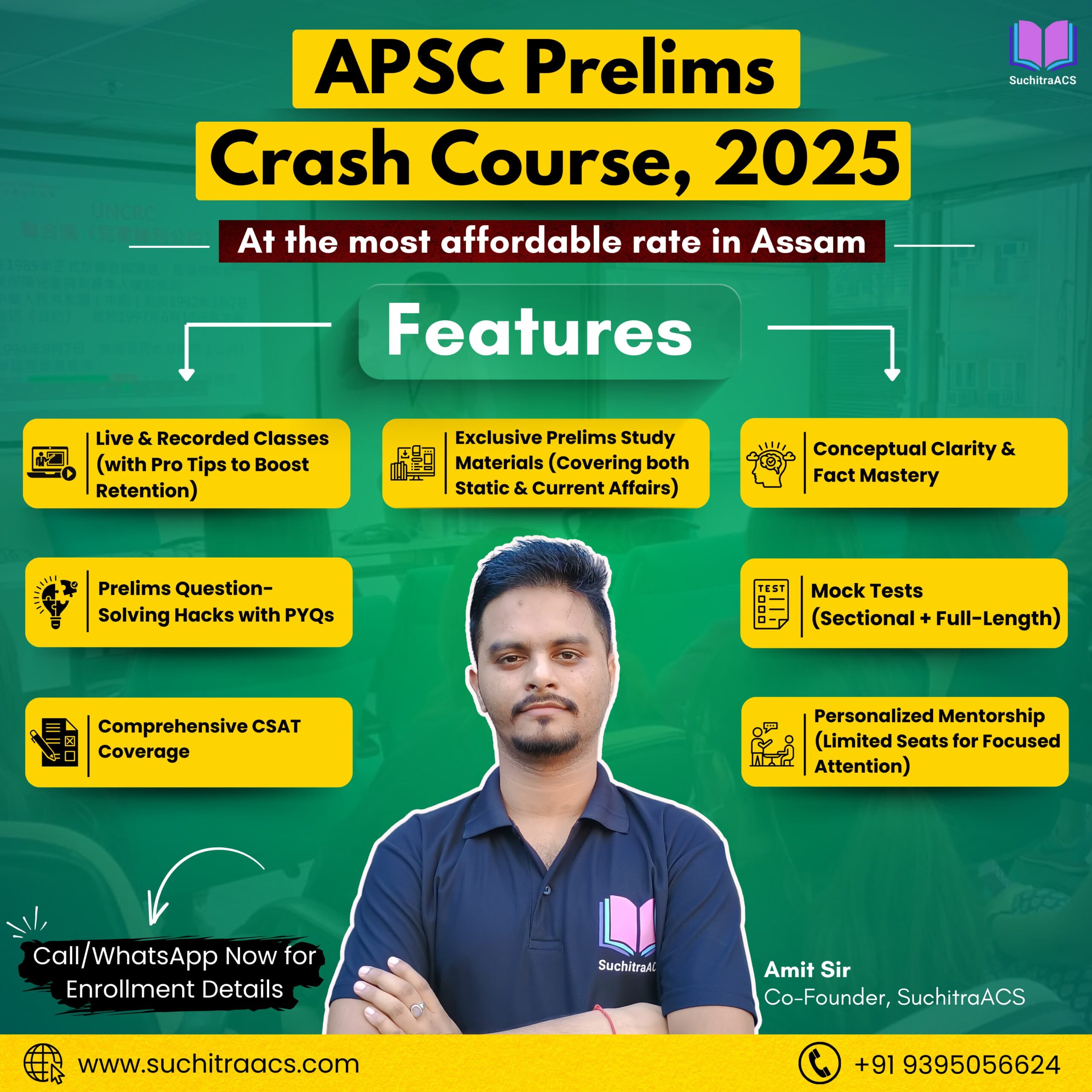
🔔 Join Our WhatsApp Study Group!
For exclusive access to premium quality content, including study materials, current affairs, MCQs, and model answers for APSC CCE and other Assam competitive exams.
Click here to join: SuchitraACS Study WhatsApp Group
📚 Want to know more about SuchitraACS’s most affordable courses?
Click here to know more: SuchitraACS Courses for APSC CCE and Assam Competitive Examinations

